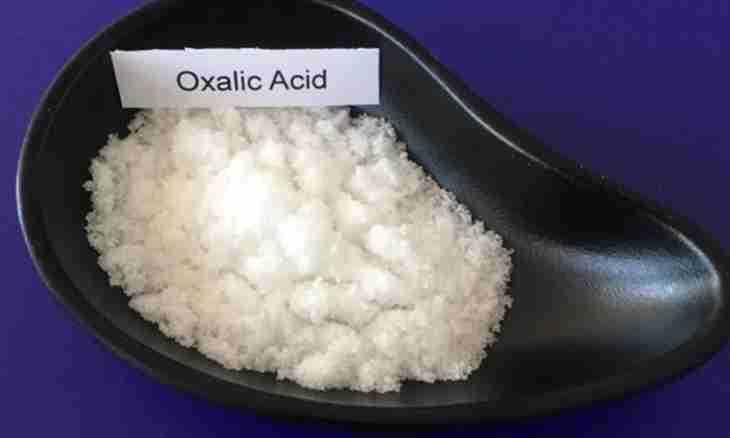HCl chlorohydrogen is colourless gas with a pungent smell, easily soluble in water. At its dissolution the acid having the same formula, as gas – HCl is formed chlorohydrogen, or salt.
Chemical bond in the molecule HCl
The chemical bond between atoms of chlorine and hydrogen in the molecule HCl is a covalent polar bond. Atom of hydrogen bears on itself a partial positive charge δ+, chlorine atom – a partial negative charge δ-. However unlike HF, between the molecules HCl it is not formed hydrogen communications.
Physical and chemical properties of hydrochloric acid
Hydrochloric acid – the colourless, caustic liquid "smoking" on air. It is strong electrolyte and in water solution completely dissociates on ions of chlorine and hydrogen:
HCl⇄H (+) +Cl (-).
In one liter of water at a zero temperature 400 liters of chlorohydrogen are dissolved.
All general properties of acids are characteristic of HCl. It actively interacts with: 1. Bases and amphoteric hydroxides: HCl+NaOH=NaCl+H2O (neutralization reaction), 2HCl+Zn (OH)2=ZnCl2+2H2O; 2. Main and amphoteric oxides: 2HCl+MgO=MgCl2+H2O, 2HCl+ZnO=ZnCl2+H2O; 3. The metals standing in an electrochemical number of tension to hydrogen (they force out hydrogen from acids): Mg+2HCl=MgCl2+H2 ↑, 2Al+6HCl=2AlCl3+3H2 ↑; 4. The salts formed by anions of weaker acids or forming in interaction about chloride ions the insoluble connections which are dropping out in a deposit: 2HCl+Na2CO3=2NaCl+CO2 ↑+H2O, HCl+AgNO3=AgCl ↓+HNO3. The last reaction is qualitative on chloride ion. In interaction of a cation of silver with anion of chlorine the white deposit – AgCl drops out: Cl (-) +Ag (+) =AgCl ↓.
Receiving chlorohydrogen from hydrogen and chlorine
Chlorohydrogen can be received direct synthesis from simple substances – hydrogen and chlorine: Cl2+H2=2HCl. This reaction goes only with the participation of quanta of hν light and does not go in the dark. With hydrogen, as well as with metals and some less electronegative, than chlorine, nonmetals, chlorine reacts as strong oxidizer.
Photons of light initiate disintegration of molecule Cl2 on the chlorine atoms having high reactionary ability. Reaction with hydrogen proceeds on the chain mechanism.
Receiving HCl by means of the concentrated sulfuric acid
At effect of the concentrated sulfuric H2SO4 acid on solid chlorides (for example, NaCl) can receive chlorohydrogen also: NaCl (TV.) + H2SO4 (konts.) =HCl ↑+NaHSO4. As a result of reaction, gaseous chlorohydrogen is emitted and sour salt – sodium hydrosulphate is formed. In the same way it is possible to receive HF from solid fluorides, but it is impossible to receive bromovodorod and yodovodorod as these connections are strong reducers and are oxidized the concentrated sulfuric acid to bromine and iodine.

